Find a great review of Flight Emergency in The Midwest Book Review’s “Small Press Bookwatch” online magazine, October 2011. The review has also been posted with the Cengage Learning, Gale interactive CD-ROM series “Book Review Index” which is published four times yearly for academic, corporate, and public library systems. The book listing on Amazon.com features the review with a 5-star rating. Thanks!
Book Giveaway on Goodreads
Join Goodreads and enter to win one of three free copies of my book, Flight Emergency! Simply sign up for an account and enter your request on the Giveaways page. You’ve got until the end of November to enter, at which point Goodreads will randomly select the three winners. There are already 45 entries and counting…
While you’re there, I’d love to hear from you. Join me as a friend or send me a message!
NASCAR Jet Pilot: No Brakes!
Tonight a news story broke about a small jet “crash landing” in Florida after losing its brakes on landing. The jet belongs to Jimmie Johnson Racing II Incorporated, a NASCAR team owner. The jet ran about 100 feet into the 600-foot overrun safety area beyond the end of the runway before coming to a stop. The good news is that no one was seriously hurt. The pilots in this case deserve praise for keeping the plane straight on the runway all the way to the end – they did not stop flying the plane! Kudos also go to the airport for recently completing the overrun safety area.
This led me to wonder what I would do if I were landing and lost my brakes? I have no personal experience flying jets beyond the flight simulator on my PC, so instead I’ll consider the Cessna 172. The main idea would be to keep the plane under control, straight and on the runway, and to stop as quickly as possible. With no brakes, I’d want to use drag. Firstly, I’d have an advantage in my small prop because it’s nowhere near as aerodynamically sleek as a jet, nor would I have the speed and momentum a larger jet would. Any headwind would also be welcome here. I’d keep my flaps fully extended to make use of their drag. (It appears the flaps are still down in the photos of the jet.) The prop itself would create drag, as the power would be at idle upon touchdown. If I was feeling especially worried about what was waiting for me at the end of the runway, I might try opening the doors! A willing passenger would be helpful in this case. Seat belts should of course be secured according to the pre-landing checklist, though a pull on the strap to snug them up a bit would be a good idea.
What if you knew there was a dangerous ditch at the end of the runway? Would you be willing to try turning off onto the taxiway even if your groundspeed was still a bit high for such a turn, making you at risk for tipping over?
Other possibilities come to mind. For instance, what if you were flying a 182 with a constant speed propeller? Could you adjust prop pitch for the shallowest angle of attack to create the most drag? This is part of the pre-landing checklist I use in preparation for a go-around, though I know some pilots don’t do this in order to minimize noise as they fly at low altitude near the airport.
Thankfully this scary Halloween event had a happy ending, save damage to the plane, and provided some food for thought we can all use to mentally prepare for such an event happening to us. Any more ideas? What would you do?
Let’s Be Friends on Goodreads
Are you a member of the Goodreads community? If you are an avid reader or an author, take a look at this fantastic site. You can share your reviews, discover new books, enter book giveaways, interact with friends who share your interests, even interact with and follow your favorite authors. Look me up and let’s be Goodreads friends!
Win a Free Book!
Answer the Challenge: What Would You Do?
A pilot friend of mine posed an interesting question to me some time ago after looking at my book and its scenario format. He asked what I would do if a vulture smashed through the windshield of my airplane during flight? This is assuming a small plane such as a Cessna 172. Other than what should be the immediate response of flying the plane (after possibly yelling in surprise), what sort of challenges would this pose? And how could you overcome them? Apparently, this had happened to someone he knew.
Imagine the scene: you now have a giant hole in your windshield from the avian kamikaze. It’s a big mess in the cockpit. Wind is rushing into the cockpit, making radio communication difficult. Any unsecured pieces of paper would have taken flight themselves. But what about flying the plane? Would you notice anything different from the gaping hole in terms of handling characteristics and aerodynamics?
The answer, he said, is yes. What you would have is a sudden increase in drag! Your airspeed would begin to drop, and this is the sort of thing that could escape your attention as you’re overcoming the surprise of your unwelcome visitor by focusing on what’s inside the cockpit. If you did notice this change, a pilot’s instinct is to increase throttle and/or lower the nose depending on the situation. Doing this, you’d have a good chance of maintaining airspeed and safely landing as quickly as possible and practicable. But there is another simple thing you could do that would not only go a long way toward reducing the drag, but also make the cockpit environment a little more comfortable for the remainder of your flight. Do you know what it is? Have any thoughts or opinions on the subject? Or has this even happened to you? Leave your comment below or email me! At the end of the month of December, I’ll announce here who was the first to come up with the correct answer, or at the very least the most creative one. The prize is a free signed copy of Flight Emergency!
First 5-Star Review on Amazon.com
Thanks to the Midwest Book Review for a 5-Star Review on Amazon.com! The Midwest Book Review of Oregon, WI was established in 1976 and publishes reviews for libraries, booksellers, and the general public. Here’s what they had to say about Flight Emergency:
“A strong and very much recommended pick for any potential pilot
Thousands of feet in the air is no place to choke in a dangerous situation. ‘Flight Emergency: Take the Left Seat in Eight Role-Playing Emergency Scenarios’ is a companion guide to those who are earning their wings and taking to the sky and want to be as prepared as possible for the worst of situations to strike where one wrong move spells their certain death. With plenty of exercises to consider even when grounded, ‘Flight Emergency’ is a strong and very much recommended pick for any potential pilot.”
Have you read the book?
Highlights from AOPA Aviation Summit
The Aircraft Owners and Pilots Association (AOPA) Aviation Summit took place this September 22-24 in Hartford, Connecticut, an incredible gathering of all things aviation. I was fortunate to be invited to the Women’s Wing, a booth hosted by Women in Aviation, International (WAI), for a book signing. In addition, I attended some excellent seminars, visited many booths on the exhibit hall floor, and wished I had a rich uncle after seeing some of the planes at Airportfest! But the highlight of the conference was the people I had the opportunity to meet – people who share a love of aviation and have amazing accomplishments and stories. Following are a few fun highlights among so many that were packed into those three days.
Terrafugia, the company making the “roadable airplane” (or flying car, depending on who you talk to) was founded by Anna Dietrich and other students after graduating from MIT. They had an idea, a plan, and the courage to go for it! Called the Transition, it’s a fascinating concept that makes getting to and from the airport convenient and introduces the option of landing and continuing a trip on the ground if weather presents a problem. Besides, what pilot hasn’t at least once wished he or she had a horn to honk when being cut off in the traffic pattern? Customer deliveries are planned for late 2012.
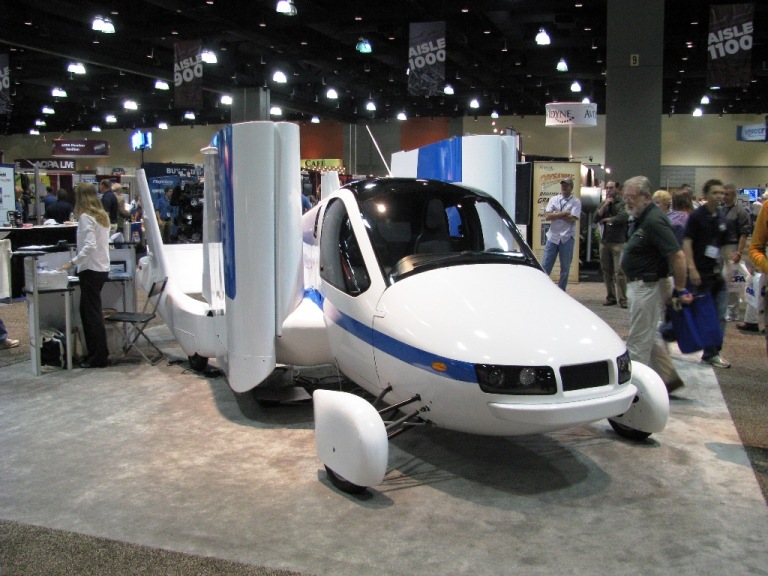
Among the many inspiring women I was fortunate to meet, one in particular stands out: Bernice “Bee” Haydu, a former member of the WASP (Women Air Service Pilots) during WWII. This group of women was not well-known even when they were actively flying. In fact, they did not gain veteran status until 1977! However, they proved that women were fully capable of flying military aircraft just as well as the men at a time when society expected them to simply be in the home. Bee has written a book called Letters Home that includes all the letters she wrote to her mother during her time as a WASP as well as fantastic photographs. I was honored to meet her. It’s because of pioneers like Bee Haydu that women in aviation today have so much more opportunity.
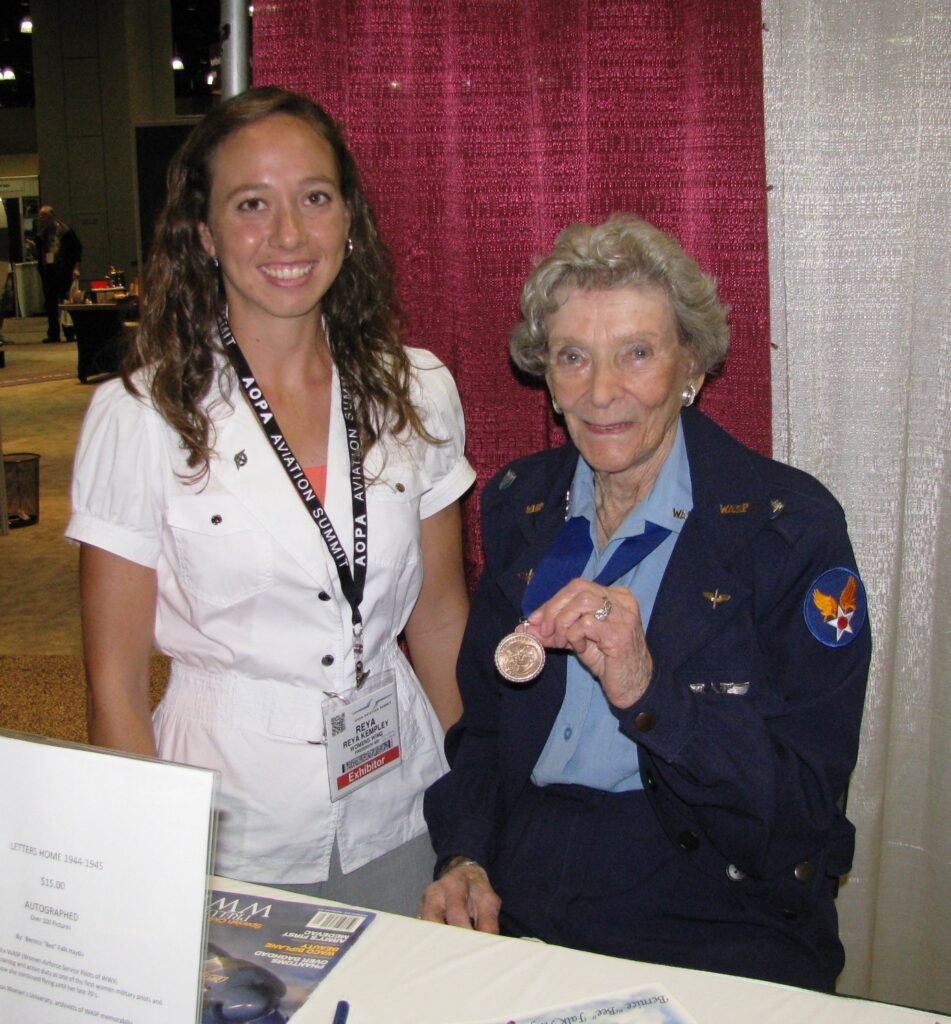
The wide variety of seminars at Summit was impressive, for pilots of every level and even non-pilots. As always, Rod Machado‘s way of teaching with humor was a hit with me and all the other audience members that packed the rooms to listen.
The people at Sun ‘n Fun certainly made my visit in Hartford much more fun! This huge International Fly-In and Expo happens every year in Lakeland, Florida and has a great group of people running it. I’ve optimistically marked March 27-April 1 on my calendar, just in case.
Though the weather was cloudy and drizzly, the gleaming airplanes at Airportfest at Brainard Airport lost no appeal. While I wasn’t the lucky winner of AOPA’s sweepstakes Cessna 182 for this year (and I would have put it to good use!), I can hope to be a new Husky pilot next year.
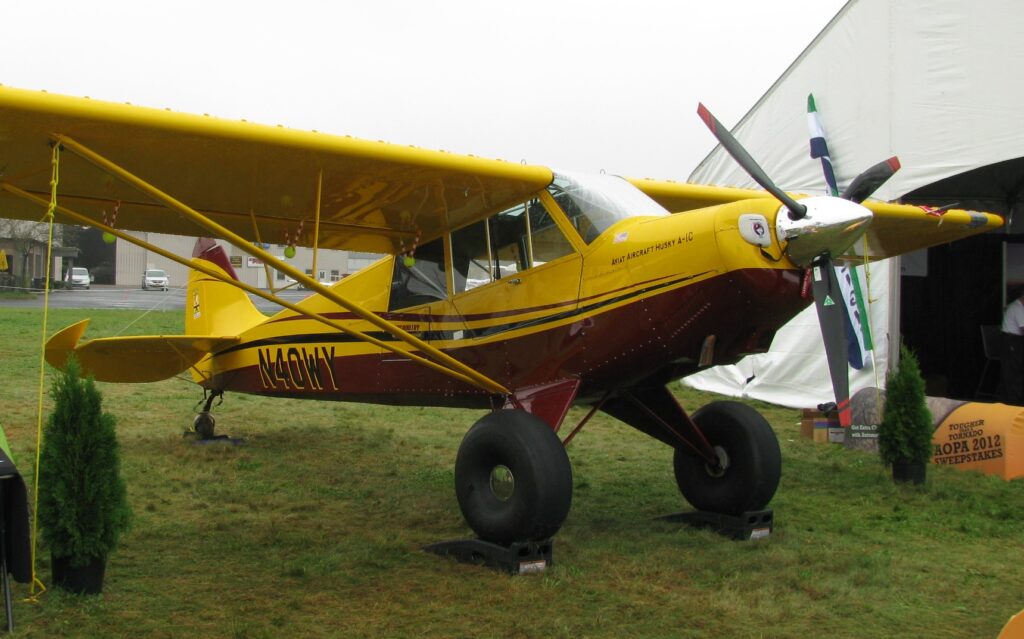
The Epic and Pilatus turboprops are two of my favorites, and the Piaggio Avanti is quite out of reach but no less fun to see in person. Also of note was the Tuskegee Airmen P-51 Mustang. It belonged to the unit of African American WWII pilots who will be the subject of the upcoming movie Red Tails developed by George Lucas.
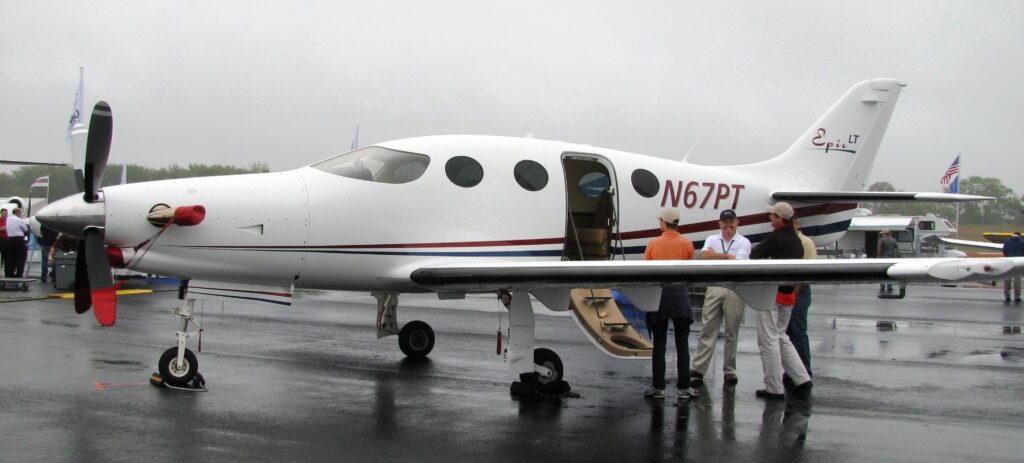
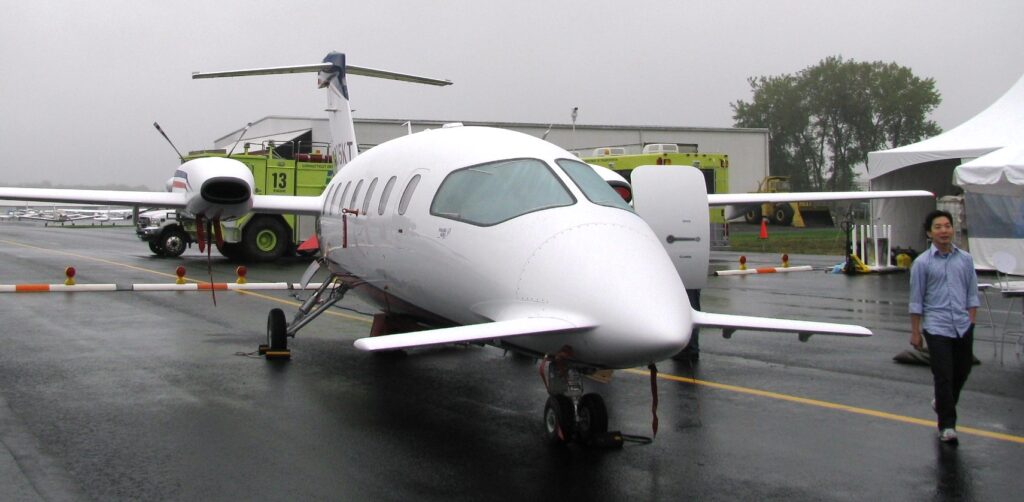
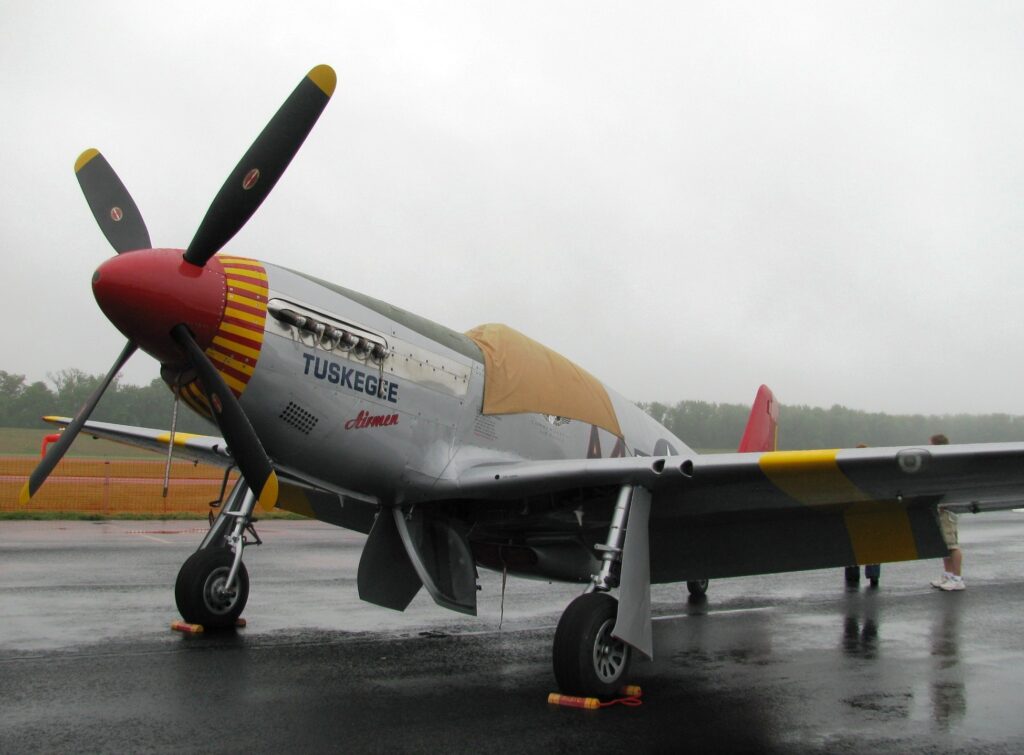
Finally, thank you to all who stopped by to get a signed copy of Flight Emergency or simply to chat. Thank you also to AOPA and WAI for the opportunity!
Flight Emergency now available at PilotMall.com
Browse the New Products at PilotMall.com Aviation Superstore and you’ll find Flight Emergency now for sale! Started in 1999 by Neil Glazer, PilotMall offers 4,000 aviation products and is based at the Albert Whitted Airport in St. Petersburg, Florida.
Kennan Rossi, The Confident Pilot
Have you ever had your doubts about whether you had the “right stuff” to be a pilot? Or maybe you’ve had a close call that shook your confidence in your ability to fly? On the other hand, perhaps you think you’re the best aviator on the planet and nothing wrong will ever happen on one of your flights? How we handle our heads as pilots is arguably the biggest factor in our safety. Kennan Rossi, a pilot from the San Jose area, recognizes the importance of the mental game in aviation. I had the good fortune to meet him and his wife at the recent Minden Aviation Roundup, when they stopped by at my booth. He writes a blog and is working on a book, both of which are entitles The Confident Pilot. His posts are excellent reads—a look into the pilot’s psyche through thoughtful discussion about the effect our experiences can have on our confidence levels in the cockpit. And they’re fun to read, too! They definitely whet my appetite for his upcoming book.
When I met Kennan and his wife in Minden, we had a great time chatting about flying and writing books. He recently wrote about our meeting and my book Flight Emergency in a blog post: “Reya Kempley.” I sincerely hope both our books help to make the future of general aviation a little safer.
Independent Publisher Names Flight Emergency a Highlighted Title
Flight Emergency has been chosen as a Highlighted Title by Independent Publisher Online! According to IP, “These books are honored each month for exhibiting superior levels of creativity, originality, and high standards of design and production quality.”
See this month’s list here, with Flight Emergency #2 in the list of 90. Thanks, IP!
